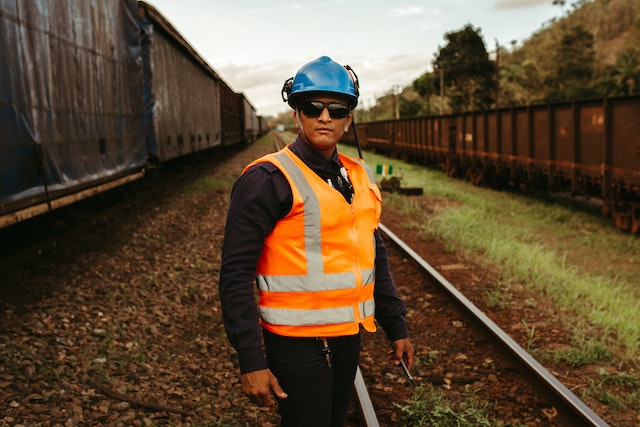
Railroad workers are regularly exposed to ballast (rock) dust in the course of their jobs. Railroads use ballast to support the railroad ties and tracks and have assigned Maintenance of Way (MOW) workers, usually trackmen, machine operators, track laborers, who are responsible for applying ballast along new railroad tracks or maintaining the ballast along existing railroad tracks. Our office has represented many railroad workers for cancer who have consistently described the massive dust clouds created during ballast dumping and track maintenance.
Why is ballast dust so dangerous? Ballast dust often contains high amounts of silica dust which has been linked to different lung diseases and lung cancer. Ballast can be either limestone or granite rock. While both of these types of rock can contain silica, generally there is more silica in granite ballast. Unfortunately for railroad workers, most railroads choose to use granite rock because limestone was seen as inferior.
The hazards of silica in rock dust have been recognized since the 1700s when lung disease was observed in high rates among stonecutters. Our law firm has uncovered evidence that railroad medical departments were discussing silica hazards as far back as the 1930s. A very famous railroad case for a worker with lung disease caused by silica exposure was decided by the Supreme Court of the United States in 1949. The evidence that the railroads were aware of the hazards of silica is not disputable.
Importantly, many railroads also tested for silica levels in ballast dust and found that track department workers were being exposed to harmful levels. Unfortunately, these same railroads chose not to warn employees about the hazards of silica in that ballast dust and now, often decades later, these workers are getting sick. It is always important to remember that ballast (and silica) related cancer and lung disease do not occur until many years after the toxic exposure. While certain railroads did provide paper dust masks to track workers starting in the 1980s or 1990s, these masks were not adequate to protect against the microscopic silica dust that was able to be breathed in and become trapped in the lungs of these railroad workers.
The problem of excessive ballast and silica dust exposures for railroad workers engaged in railroad track work has been recognized by the World Health Organization (WHO), the National Institute of Occupational Safety and Health (NIOSH) and the Occupational Safety and Health Administration (OSHA). Each of these organizations have published studies indicating that railroad workers can be exposed to unsafe levels of dust which can place them at risk to develop disease. In fact, when OSHA reduced the Permissible Exposure Level (PEL) for silica in 2016, it specifically referenced certain crafts in the rail industry that were being chronically over-exposed to silica according to air testing. These crafts included track workers dumping ballast, ballast regulator operators, broom operators and ballast tamper operators.
If you or a loved one worked for the railroad and would like more information about the hazards of ballast and silica dust or the compensation that is available from the railroad, please contact the experienced railroad attorneys at Doran and Murphy, PLLC, toll-free.





